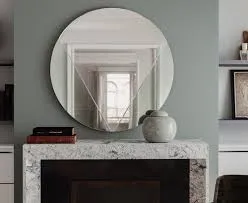

The Marvel of Ultra Transparent Glass
In recent years, the development of ultra-transparent glass has revolutionized various industries, bringing both aesthetic appeal and functional benefits to our built environment. This innovative material is characterized by its remarkable clarity and minimal light reflection, making it a preferred choice for numerous applications ranging from architecture to technology.
Ultra-transparent glass, often referred to as low-iron glass, possesses a significantly reduced iron content compared to conventional glass. This lower iron content allows more light to pass through, resulting in a higher transparency level. As a consequence, it delivers stunning visual clarity, making colors appear more vibrant and true to life. This type of glass was initially popularized in the art of glass-making, where it enhances the appearance of intricate designs, allowing light to shine through beautifully.
The Marvel of Ultra Transparent Glass
In addition to its aesthetic advantages, ultra-transparent glass provides significant energy efficiency benefits. Its enhanced light transmission reduces the need for artificial lighting during the day, translating to lower energy consumption and increased sustainability. Furthermore, many advancements in ultra-transparent glass technology include coatings that help regulate solar heat gain, ensuring that buildings remain comfortable throughout the seasons without excessive reliance on heating or cooling systems.

Beyond architecture, ultra-transparent glass has made notable inroads into the technology sector. It is increasingly used in high-end electronic devices such as smartphones, tablets, and televisions, where clarity and display quality are paramount. The glass not only enhances the viewing experience but also contributes to sleek, modern designs that resonate with consumers. In addition, optical applications such as camera lenses, microscope slides, and scientific instruments benefit from the superior light transmission offered by ultra-transparent glass.
Another exciting frontier for ultra-transparent glass lies in the realm of renewable energy. In recent developments, researchers have explored the incorporation of transparent solar cells into ultra-transparent glass. This innovation could potentially transform windows into energy-generating surfaces, allowing buildings to harness solar power without sacrificing aesthetics or functionality.
As with any technology, there are challenges to overcome when it comes to the widespread adoption of ultra-transparent glass. Costs can be higher than those of traditional glass products, and it requires careful handling during installation to prevent damage. However, as advancements continue and production techniques improve, it is likely that the barriers to entry will decrease, making ultra-transparent glass more accessible to a broader market.
In conclusion, ultra-transparent glass is not just an elegant design choice; it is a transformative material that offers a plethora of benefits across various sectors. Its superior light transmission, energy efficiency, and aesthetic appeal make it a compelling option for architects, manufacturers, and consumers alike. As we continue to innovate and explore the capabilities of this remarkable material, the future promises even more exciting applications that could redefine how we experience our built environment.